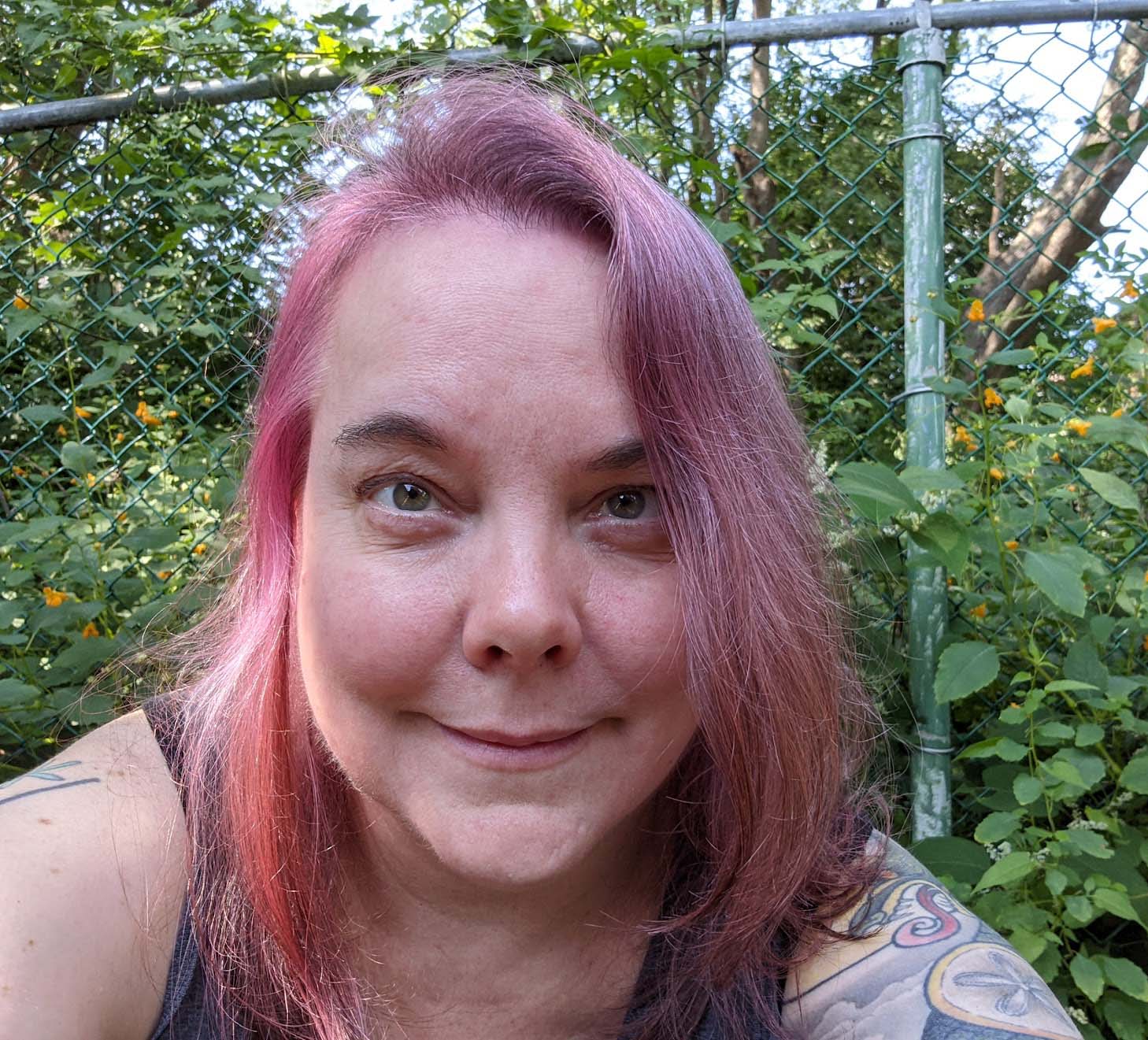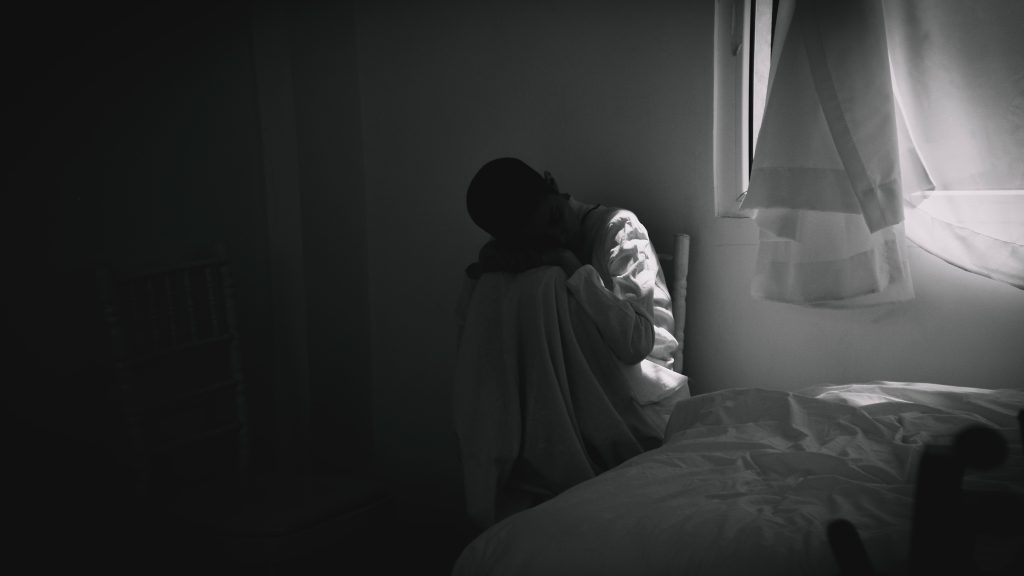When Sinéad O’Connor’s The Lion and the Cobra was released in 1987, I was an exchange student spending my senior year of high school in West Berlin, Germany. My mom and stepdad sent me the cassette tape and I was instantly drawn to her unique voice and most of all, her anger and grief. Painful secrets from childhood haunted me day and night, and I couldn’t get anyone to listen. I was deemed weak for not being able to simply forget about the abuse and move on. Worse still, others called me a liar, even though they knew better.
By middle school, we’d moved from just outside Boston to a small town in central Massachusetts where I was relentlessly bullied until I left for the exchange program. Every day, I tried to avoid brutal beatings by getting to school early and leaving late, hiding in spaces where they wouldn’t find me. As the only punk-Goth girl in that Lovecraftian, small-town high school, broken by PTSD that I didn’t know I had from childhood, I was an easy target. Sinéad’s rage-filled howls awoke my own anger about the past. It was liberating. Only three years older than me, she was like the renegade sister I never had.
I came home from my year abroad to find my mom and stepdad facing a failing marriage. The way my stepdad broke my mom’s heart shattered her. I remember him sitting on the front stoop one evening, watching the sunset as he contemplated his future without us. Playing The Lion and the Cobra was like setting off a weapon. Tears abound, especially if my mom was around when “Troy” played. Yet, it was one of my favorite albums because of its therapeutic effect—it was the only way I knew how to express my anguish.
Decades later, that album continued to be in regular rotation during my rage-and-sorrow ramblings when I wrote my novels using a fountain pen and notebook, getting up to dance and sing along to my favorite tunes well into the night. I was living in functional freeze—a product of a buried childhood that refused to be ignored. My nervous system still hid in the kitchen cabinet like I did when I was four, trying to avoid being found by my abusers. I struggled with depersonalization and derealization without knowing what was happening. I had no name for it. I just figured it was better to keep my mouth shut.
Life eventually got better. Ten years ago, I married my soul mate and quit a soul-stifling job that was becoming like high school all over again. I began to heal without being aware of it. Things were safe, so the trauma felt comfortable in creeping out of its restless grave. My husband and I found a cool place to live on Boston’s outer edges and I found a job that let me be creative and grow my career. Then perimenopause kicked in. The HPA axis (hypothalamic-pituitary-adrenal) becomes dysregulated and is responsible for what are known as vasomotor symptoms: hot flashes, heart palpitations, anxiety, and night sweats. The HPA axis is also dysregulated because of CPTSD, so it was a double whammy. It was only a matter of time before the dam broke.
“I am not like I was before I thought that nothing could change me”
The combination of being in a safe environment and perimenopause set up the perfect storm. My breakdown occurred in the spring of 2021, just as chronic pain from fibroid tumors and endometriosis was taking over my life. After reviewing the results of the Adverse Childhood Experience (ACE) and PTSD questionnaires, I was diagnosed with CPTSD in the fall. Hospital visits and therapy became the focus. After being mostly bedridden for more than a year, I finally had the much-needed surgery. But it came at a high cost in the form of medical trauma, which I wrote about in another blog post on this site. A near-fatal adverse reaction from a common pain med sent me to the ER. I happened to fall into that tiny, less-than-one percent category where it was highly toxic. As my nervous system and brain stem were shutting down, an ER doc, upon learning I live with CPTSD, dismissed me as having a panic attack. It’s a new trauma that I’m still coping with, but the outcome provided an opportunity that astonishes me to this day.
Weeks after the CPTSD Foundation published my blog on medical trauma, I was contacted by an instructor from a medical school with an offer: she had shared my blog with her class, and they wanted to work with me on creating an educational module to help future healthcare professionals understand how to work with patients living with complex trauma. The instructor operates a nonprofit dedicated to helping victims of human trafficking, and the students’ training includes working with human trafficking victims who are incarcerated. We’ve been working together for nearly a year now and the project continues to grow.
My advocacy efforts also led me to the WHO’s Patients for Patient Safety Committee, where I recently gave a presentation on AI and the online patient journey as it relates to mental health. I outlined how companies and advertisers work to be found, from the moment a person types in symptoms they’re trying to figure to out the post-diagnosis search for finding resources for treatment. Keywords drive what appears on the first page of search engine results. Knowing that 75% of people don’t click past the first page, marketers need to capture that spot, and AI has been assisting in creating ads that appear in those first search results for some time now. Often, ads promise quick cures. Mental health services are increasingly popular and the competition is tough. In addition to showing how people look for help online, I shared how mental health services use AI, sometimes without people knowing. The presentation made more of an impact than I anticipated, and now I’m scheduled to give it again to other groups.
I’m honored to have these opportunities. When I first shared my CPTSD story, I worried about going public with it. I had no idea where it was going to go. But if this work helps anyone struggling with CPTSD, I’ll be grateful. I attribute these efforts in part to Sinéad, my patron saint of rage, because she helped me find my voice.
“I have not seen freedom before
And I did not expect to
Don’t let me forget, now I’m here”
I didn’t know anything about Sinéad O’Connor’s personal life until I read her memoir, Rememberings: Scenes from My Complicated Life, while I was recovering from surgery last year. The book had a powerful impact on me. It helped me heal. Although our backgrounds are very different, there were enough similarities in essence. I related to her state of mind. I inherited plenty of generational trauma from my Irish heritage and her account of life in Ireland gave me some deeper insights into a history that I’m only just learning more about now. I was following her on Twitter when her son Shane committed suicide and she was tweeting from the hospital where she was staying after being tempted by the idea of suicide herself. And it wasn’t the first time, as she explained in her book. Her mourning, her wild humor, and her snark as she addressed any haters on Twitter resonated in my soul.
The news of Sinéad O’Connor’s death breaks my heart. Many of us who struggle with mental illness know those dark spaces where death seems to offer peace from the chaos we find here in the world. Her music guided me and so many of my fellow GenX friends through difficult times—times we faced with a maelstrom of emotion. We raged, we sang, and we tried our best to hide our pain throughout all of it.
Airím uaim thú, mo deirfiúr álainn. Thank you for sharing your voice with us. I’ll always carry your songs in my heart.
“Now I feel so different”
Guest Post Disclaimer: Any and all information shared in this guest blog post is intended for educational and informational purposes only. Nothing in this blog post, nor any content on CPTSDfoundation.org, is a supplement for or supersedes the relationship and direction of your medical or mental health providers. Thoughts, ideas, or opinions expressed by the writer of this guest blog post do not necessarily reflect those of CPTSD Foundation. For more information, see our Privacy Policy and Full Disclaimer.

Lee Frost has worked for nonprofits and marketing agencies focusing on healthcare for the past ten years. She’s a patient advocate and recently launched a blog about menopause and CPTSD called the Sinsemillier. She grew up in the Boston area and has a BA from UMass Boston and a master’s from Harvard Extension School. Lee lives north of Boston with her husband, where they both love to nerd out on sci-fi and fantasy.





Hi Lee, Thank you so much for your blog and for your articles. I so relate to your journey as I am a GenX’r too and the dam broke for me last April 2022 at age 55 into post menopause. I spent the next 8 months crying daily with flashbacks and throwing everything at it to try and heal. I have a wonderful husband so this helps, but after joining a Spiritual cult which just made things worse, we finally ended up in Bozeman, MT where I found Somatic Experiencing with a local practitioner. Turns out this is a hub for it. 1.5 years later, I am finding more resilience as I continue my healing. Thank you again for your offerings as a resource. It is helpful.
Thank you for reading my work and sharing your story! Somatic experiencing has been amazing for me. It took me quite a while to learn how to pace myself, but once I started integrating the practice, bit by bit, I started to feel so much better. I hope your healing journey continues with peace and support. 🙂
So good to read this stuff, I can relate … C-PTSD with Perimenopause, it’s hardcore & I’m scared of my mind as it excavates the worst traumas on a loop, narrated by the harshest inner critic. It’s like living with a broadcast of misery & terror 24/7, I can feel the hormones surging when this happens & I’m just an overwhelmed husk of a women. Is there an end to this torture?